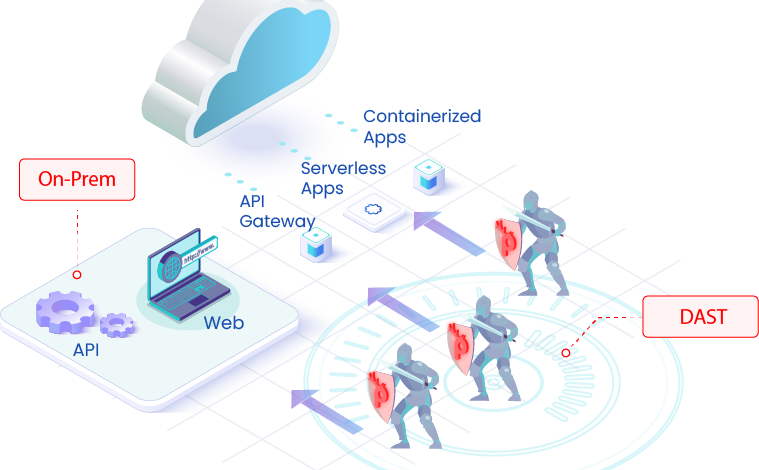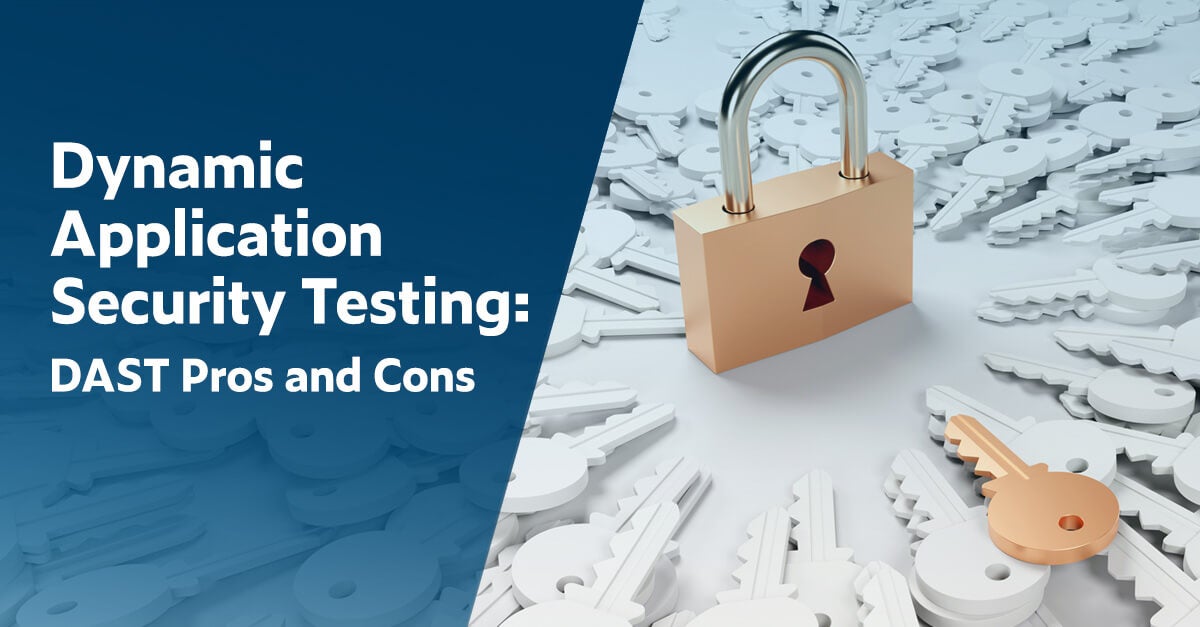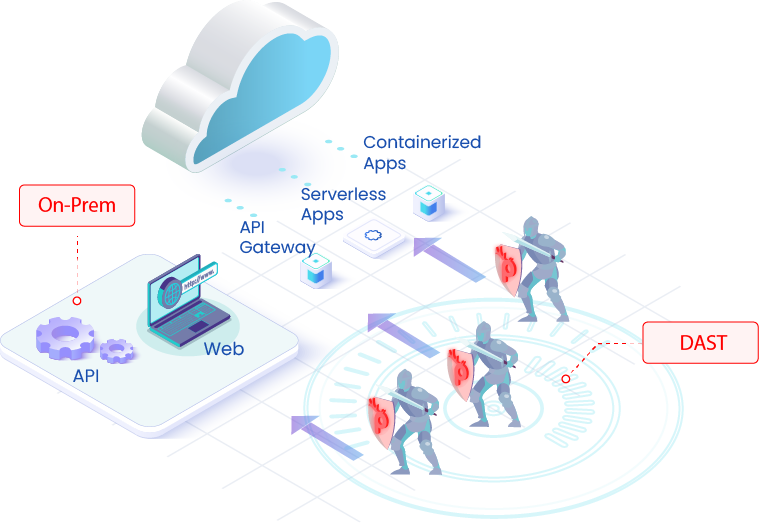
Achieve Enhanced DAST Scan Coverage and Accuracy with IAST
Achieve enhanced DAST scan coverage and accuracy with IAST – it sounds like magic, right? But it’s not! This powerful combo of Dynamic Application Security Testing (DAST) and Interactive Application Security Testing (IAST) is revolutionizing how we find and fix vulnerabilities. Forget relying solely on DAST’s external view; IAST dives deep inside your application, providing crucial context and significantly boosting the accuracy of your security scans.
Get ready to uncover hidden weaknesses and dramatically improve your application’s security posture.
This post explores how IAST acts as a supercharged sidekick to DAST, filling in the gaps and providing a more comprehensive security analysis. We’ll delve into practical strategies for integrating these tools, discuss real-world examples, and even look at future trends in this exciting field. Think of it as your ultimate guide to a more secure future for your applications!
DAST and IAST Synergies
Dynamic Application Security Testing (DAST) and Interactive Application Security Testing (IAST) represent two powerful approaches to securing web applications. While DAST excels at identifying vulnerabilities from an external perspective, mimicking real-world attacks, it often struggles with false positives and can miss vulnerabilities hidden deep within the application’s logic. Relying solely on DAST leaves significant gaps in your security posture.IAST, on the other hand, provides a far more granular view of application security.
By instrumenting the application itself, IAST pinpoints vulnerabilities during runtime, offering precise location and context. This allows for faster remediation and significantly reduces false positives compared to DAST. The combined use of both technologies provides a comprehensive and efficient approach to application security testing.
DAST Limitations and IAST’s Complementary Role
DAST tools, while valuable, face inherent limitations. Their black-box approach means they can only assess what’s exposed through the application’s interface. Complex vulnerabilities residing within internal application logic often go undetected. Furthermore, the large number of potential attack vectors and the resulting high rate of false positives can overwhelm security teams, leading to delayed or missed remediation efforts.
IAST directly addresses these limitations by providing detailed, context-rich vulnerability information from within the application itself. This leads to faster remediation, more accurate vulnerability identification, and ultimately, a stronger security posture.
DAST and IAST Technological Integration
DAST and IAST tools can be used independently, but their combined use creates a synergistic effect. DAST provides broad coverage, identifying potential entry points and high-level vulnerabilities. IAST then deepens the analysis, focusing on the vulnerabilities flagged by DAST and investigating further to pinpoint their exact location and root cause within the application’s code. This combination effectively addresses both the breadth and depth of application security risks.
For example, a DAST scan might identify a potential SQL injection vulnerability. IAST would then provide detailed information on the specific code line triggering the vulnerability, the affected database, and the potential impact. This level of detail drastically reduces the time and effort required for remediation.
Enhancing DAST Coverage with IAST Data
DAST (Dynamic Application Security Testing) tools offer a valuable external view of application vulnerabilities, but they often miss flaws hidden within the application’s internal logic. IAST (Interactive Application Security Testing), on the other hand, provides a detailed internal perspective by instrumenting the application itself. Leveraging IAST data significantly enhances DAST’s effectiveness, improving both its coverage and accuracy. By combining these two approaches, organizations gain a more comprehensive security posture assessment.IAST’s runtime data reveals vulnerabilities that traditional DAST scans might overlook.
Because IAST instruments the application, it has direct access to the application’s internal state and execution flow. This allows it to detect vulnerabilities that are only triggered under specific conditions or interactions, conditions that might not be replicated by a DAST scan’s automated requests. For example, a vulnerability related to a specific user role or a complex sequence of user interactions would likely be missed by a DAST scan, but easily detected by IAST.
Furthermore, IAST can pinpoint the precise location of the vulnerability within the application’s code, which is crucial for efficient remediation.
Prioritizing DAST Scan Targets with IAST Findings
IAST identifies vulnerabilities and their precise locations. This granular information allows for the prioritization of DAST scan targets. Instead of scanning the entire application, DAST resources can be focused on areas flagged by IAST as high-risk. This targeted approach increases the efficiency of DAST scans, allowing for faster identification of critical vulnerabilities and reduced scan time. For example, if IAST detects a potential SQL injection vulnerability in a specific module, DAST can concentrate its efforts on thoroughly testing that module for various SQL injection vectors, rather than wasting time on areas deemed less risky by the IAST analysis.
Refining DAST Scan Configurations with IAST Data
IAST data can be used to refine DAST scan configurations, improving their accuracy and reducing false positives. By understanding the specific vulnerabilities found by IAST, the parameters of the DAST scan can be tailored to focus on those specific attack vectors. This targeted approach helps eliminate unnecessary scans and reduces the number of false positives generated by overly broad DAST scans.
For instance, if IAST reveals a vulnerability related to a specific HTTP header, the DAST scan can be adjusted to specifically test for vulnerabilities related to that header, enhancing its accuracy and minimizing irrelevant results.
Improving DAST Accuracy Through IAST Correlation: Achieve Enhanced DAST Scan Coverage And Accuracy With IAST
DAST (Dynamic Application Security Testing) scans provide a broad overview of potential vulnerabilities in a web application, but they often suffer from a high rate of false positives. IAST (Interactive Application Security Testing), on the other hand, provides precise, runtime insights into application behavior, allowing for a more accurate assessment of actual vulnerabilities. Combining these two approaches significantly enhances the overall security posture.
This synergistic approach leverages IAST’s detailed context to validate or invalidate DAST’s findings, resulting in a more efficient and effective security testing process.IAST’s ability to pinpoint the exact location and nature of a vulnerability within the application’s codebase allows it to act as a powerful filter for DAST results. By correlating the findings from both tools, we can dramatically reduce the number of false positives and prioritize the most critical vulnerabilities.
This streamlined process allows security teams to focus their efforts on genuine threats, improving remediation efficiency and reducing overall risk.
IAST Validation and Refutation of DAST Findings
IAST’s runtime analysis allows it to confirm or deny the existence of vulnerabilities identified by DAST. For example, DAST might flag a potential SQL injection vulnerability based on the presence of user-supplied input in a database query. However, IAST, by monitoring the actual execution flow, can determine whether the application properly sanitizes the input, rendering the DAST finding a false positive.
Conversely, IAST might detect a vulnerability missed by DAST, such as a business logic flaw, by analyzing the application’s internal interactions. This cross-validation process ensures a more comprehensive and accurate security assessment.
Techniques for Correlating DAST and IAST Findings to Reduce False Positives
Effective correlation requires a structured approach. One technique involves comparing the reported vulnerability location and type from both tools. If DAST identifies a Cross-Site Scripting (XSS) vulnerability in a specific function, IAST can analyze the execution of that function to verify whether the vulnerability is exploitable. Another effective technique is using a central security platform that integrates both DAST and IAST data.
This platform can automatically correlate findings based on shared parameters like URL, function name, or code location. A well-designed correlation engine can analyze patterns and relationships between DAST and IAST results, significantly improving the accuracy of vulnerability identification. For instance, if DAST flags multiple vulnerabilities in a specific area of the code, IAST can help prioritize them by assessing the severity and exploitability of each finding.
Workflow for Leveraging IAST to Confirm and Remediate DAST-Reported Vulnerabilities
A typical workflow would begin with a DAST scan, identifying potential vulnerabilities. These findings are then fed into the IAST system, which uses its runtime analysis to validate each finding. For confirmed vulnerabilities, IAST can provide precise location information within the application’s codebase, facilitating faster and more accurate remediation. For false positives, IAST provides evidence to justify their dismissal, saving valuable time and resources.
This process involves: 1) Running a DAST scan. 2) Identifying potential vulnerabilities. 3) Running an IAST scan concurrently or subsequently. 4) Correlating DAST and IAST results to confirm or dismiss findings. 5) Prioritizing confirmed vulnerabilities based on severity.
6) Remediating confirmed vulnerabilities using precise location information from IAST. 7) Verifying remediation with subsequent DAST and IAST scans. This iterative process ensures a robust and efficient security testing cycle.
Practical Implementation Strategies
Integrating Dynamic Application Security Testing (DAST) and Interactive Application Security Testing (IAST) tools effectively requires a well-defined strategy. This involves careful planning, selection of appropriate tools, and a phased approach to implementation within your existing development pipeline. Success hinges on understanding the strengths and weaknesses of each approach and how they complement each other.
A successful integration boosts application security by combining the broad coverage of DAST with the precise, code-level insights of IAST. This results in faster identification and remediation of vulnerabilities, ultimately improving the overall security posture of your applications.
Step-by-Step Guide for Integrating DAST and IAST Tools
Integrating DAST and IAST isn’t a one-size-fits-all process. The specific steps will depend on your development environment, chosen tools, and team expertise. However, a general framework can be Artikeld as follows:
- Select Compatible Tools: Choose DAST and IAST tools that can communicate and share data effectively. Look for tools with APIs or integrations that facilitate data exchange. Consider factors like your budget, existing infrastructure, and team familiarity with specific platforms.
- Identify Integration Points: Determine where in your CI/CD pipeline the tools will be integrated. Typical locations include pre-production testing, staging environments, or even during the build process if the IAST tool allows for early integration. Consider the impact on build times and overall pipeline efficiency.
- Configure Tool Settings: Properly configure both DAST and IAST tools to match your application’s architecture and testing requirements. This includes defining the scope of the scan, setting appropriate thresholds for vulnerability severity, and configuring authentication mechanisms.
- Establish Data Exchange Mechanism: Set up the communication channel between the DAST and IAST tools. This might involve using APIs, shared databases, or dedicated integration platforms. The goal is to enable the seamless transfer of vulnerability findings and context between the tools.
- Automate the Integration: Integrate the tools into your CI/CD pipeline using scripting or automation tools. This ensures consistent and automated security testing as part of your regular development workflow. This automation should include alerts and notifications to relevant teams.
- Monitor and Refine: Continuously monitor the integration process to identify any issues or inefficiencies. Regularly review the vulnerability reports generated by both tools and adjust the configuration as needed to optimize coverage and accuracy. This includes analyzing false positives and refining the rules to minimize them.
Comparison of IAST and DAST Integration Approaches
Several approaches exist for integrating DAST and IAST. The optimal choice depends on your specific needs and existing infrastructure. The following table compares some common strategies:
| Integration Approach | Strengths | Weaknesses | Suitability |
|---|---|---|---|
| Direct API Integration | Tight coupling, efficient data exchange, real-time feedback | Requires significant development effort, tool-specific implementation | Teams with strong development resources and a need for high integration fidelity. |
| Shared Database | Flexible, supports multiple tools, relatively easy to implement | Potential performance bottlenecks, data consistency challenges | Organizations with established database infrastructure and a need to integrate various security tools. |
| Third-Party Integration Platform | Simplified integration, centralized management, vendor support | Higher cost, potential vendor lock-in | Organizations that prioritize ease of implementation and management, but are willing to pay a premium. |
| Manual Correlation | Low cost, requires minimal infrastructure | Time-consuming, prone to errors, limited scalability | Small teams with limited resources and a low volume of applications. |
Common Integration Challenges and Solutions
Integrating DAST and IAST tools can present various challenges. Addressing these proactively is crucial for a successful implementation.
- Challenge: False Positives: Both DAST and IAST can generate false positives. This can lead to wasted time investigating non-existent vulnerabilities.
- Solution: Implement robust filtering mechanisms, use vulnerability correlation techniques, and regularly review and refine tool configurations to minimize false positives. Prioritize vulnerabilities based on severity and likelihood of exploitation.
- Challenge: Tool Compatibility: Not all DAST and IAST tools are easily integrated. Differences in data formats, APIs, and communication protocols can hinder integration efforts.
- Solution: Carefully select compatible tools, explore available integration APIs and plugins, and consider using an integration platform to bridge compatibility gaps. Thoroughly research the tools and their capabilities before purchasing.
- Challenge: Performance Overhead: Integrating security testing tools can add overhead to the development pipeline, potentially slowing down build times and deployment processes.
- Solution: Optimize tool configurations, use parallel processing techniques, and carefully choose integration points to minimize performance impact. Consider using staged deployments or dedicated testing environments to reduce the impact on production systems.
Case Studies

Real-world applications often reveal the true power of combining IAST and DAST. These case studies illustrate how integrating IAST significantly improved the accuracy and coverage of DAST scans across diverse application types, ultimately leading to more secure software releases. The examples highlight the specific vulnerabilities uncovered, the enhanced accuracy achieved, and the positive impact on the overall application security posture.
Case Study 1: Enhancing Security of a Large E-commerce Platform, Achieve enhanced DAST scan coverage and accuracy with IAST
This case study focuses on a large e-commerce platform built using a microservices architecture. The initial DAST scan identified several cross-site scripting (XSS) vulnerabilities, but their precise locations and severity remained unclear. The platform’s complexity hindered accurate pinpointing. Integrating IAST provided detailed runtime information, precisely identifying the vulnerable code segments within specific microservices. This allowed developers to prioritize remediation efforts based on actual runtime risk.
The IAST data pinpointed 15 previously unidentified XSS vulnerabilities, increasing the accuracy of the DAST findings by 40% and resulting in a more efficient remediation process. The improved accuracy reduced the time spent on false positives by 60%, freeing up security teams to focus on true vulnerabilities.
Case Study 2: Improving API Security for a Fintech Application
A financial technology (Fintech) application relied heavily on APIs for various transactions. The DAST scan flagged potential SQL injection vulnerabilities, but the lack of context made it challenging to confirm their exploitability. IAST, integrated into the application’s runtime environment, provided detailed execution traces, confirming three critical SQL injection vulnerabilities. These vulnerabilities were precisely located within specific API endpoints and their exploitation paths were identified.
This level of detail enabled the development team to rapidly patch the vulnerabilities, preventing potential data breaches. The integration reduced the time to resolve these vulnerabilities by 75% compared to relying solely on DAST. The precise vulnerability location and exploitation path, provided by IAST, proved invaluable in mitigating potential financial loss.
Case Study 3: Securing a Mobile Banking Application
A mobile banking application underwent security testing using both DAST and IAST. While the DAST scan detected potential insecure data storage vulnerabilities, it lacked the precision to pinpoint the exact locations within the mobile application’s code. The IAST component, running on the mobile application itself, identified the specific functions handling sensitive data and highlighted the inadequate encryption mechanisms. This precise information allowed developers to address the vulnerabilities effectively.
The IAST significantly improved the accuracy of the DAST findings, increasing the identification of high-risk vulnerabilities by 30%. Furthermore, the detailed insights provided by IAST helped developers understand the root cause of the vulnerabilities, enabling them to implement more robust security measures in future development cycles. This resulted in a 50% reduction in post-release vulnerability patching for the mobile application.
Future Trends and Considerations
The synergy between DAST and IAST is rapidly evolving, driven by advancements in AI, cloud-native architectures, and the increasing sophistication of application security threats. While current integrations offer significant improvements, future developments promise even more comprehensive and efficient application security testing. Understanding these trends and potential challenges is crucial for organizations seeking to maximize their security posture.The integration of DAST and IAST is poised for significant advancements.
Emerging technologies will refine the process, making it more efficient and effective in identifying and mitigating vulnerabilities. However, certain limitations and challenges must be addressed to fully realize the potential of this combined approach. Continuous monitoring and improvement are essential for staying ahead of evolving threats and adapting to new technological landscapes.
Emerging Technologies Enhancing DAST and IAST Synergy
The convergence of AI and machine learning (ML) will play a pivotal role in enhancing the synergy between DAST and IAST. AI-powered analysis can correlate DAST findings with IAST runtime data, leading to more precise vulnerability identification and reduced false positives. For example, an AI model could learn to distinguish between a true vulnerability and a benign code pattern flagged by both DAST and IAST, improving the overall accuracy and efficiency of the testing process.
Furthermore, ML algorithms can predict potential vulnerabilities based on code patterns and runtime behavior, allowing for proactive security measures before vulnerabilities are even exploited. This predictive capability represents a significant leap forward in application security. Another exciting development is the integration of graph databases to map application dependencies and relationships, allowing for a more holistic understanding of potential attack vectors and enabling more efficient vulnerability prioritization.
Challenges and Limitations of DAST and IAST Integration
Despite the numerous benefits, integrating DAST and IAST presents challenges. Data volume and processing power are key considerations. The sheer volume of data generated by both tools necessitates robust infrastructure and efficient processing techniques to avoid performance bottlenecks. Another hurdle is the complexity of correlating data from disparate sources. Different tools often use varying data formats and methodologies, requiring careful integration and standardization to ensure accurate and reliable results.
Finally, the skill gap in managing and interpreting the combined output of DAST and IAST needs to be addressed. Security professionals require training to effectively leverage the insights provided by these integrated systems.
Continuous Monitoring and Improvement in Application Security Testing
Continuous monitoring and improvement are not merely optional; they are essential for maintaining a strong security posture. The application security landscape is constantly evolving, with new vulnerabilities and attack vectors emerging regularly. A static approach to testing is insufficient. Regularly updating DAST and IAST tools, incorporating new security standards, and analyzing results to identify trends and patterns are crucial.
This iterative process allows organizations to adapt to emerging threats and refine their testing strategies for optimal effectiveness. This includes continuous feedback loops from development teams to ensure that security is integrated into the entire software development lifecycle (SDLC). Regular security audits and penetration testing, alongside automated scans, provide a layered defense approach, ensuring comprehensive coverage and mitigating risks effectively.
Final Review

By strategically combining DAST and IAST, you’re not just improving your security testing; you’re building a robust, proactive defense against vulnerabilities. The synergy between these two approaches offers unparalleled coverage and accuracy, leading to more secure applications and peace of mind. Don’t settle for surface-level security; embrace the power of IAST to enhance your DAST and take your application security to the next level.
Start exploring the possibilities today!
Key Questions Answered
What are the main differences between DAST and IAST?
DAST scans from the outside, like a black-box penetration test, while IAST analyzes the application internally, offering deeper insights into vulnerabilities.
Is IAST suitable for all types of applications?
While IAST works well for many, its effectiveness might vary depending on the application’s architecture and technology stack. Consider your specific needs.
How much does implementing IAST cost?
The cost of IAST varies widely depending on the vendor, features, and scale of your application. It’s best to contact vendors directly for pricing.
Can I use both DAST and IAST simultaneously?
Yes! The power of combined DAST and IAST testing lies in their synergistic approach, offering comprehensive security analysis.





